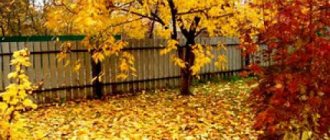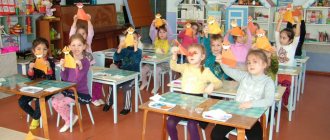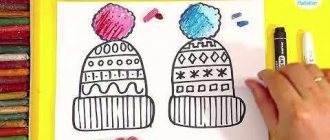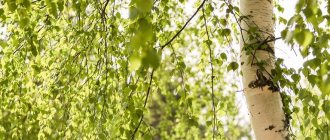Labor of people in the fall, junior group. Planning on the topic “People’s Work”
- 1
- 7
Preview of page #1
| Day of the week | The topic is directly educational activities | Program objectives, methodological techniques | Additional and methodological support |
| 1 | 2 | 3 | 4 |
| Cognitive development (FEMP) Diagnostics | Tasks: 1. Length measurement exercise using conventional measurement. 2. Strengthen the ability to find similarities and differences between objects. 3. Practice counting to 10 and vice versa, knowing how to name the neighbors of numbers. 4. Reinforce your knowledge of shapes and their types. Moving: page 88, Novikova V.P. | To measure Tables with numbers Printed notepad Counting set | |
| Music Diagnostics | Tasks: 1. Study carefully, listen to the song, tell us about its character and content. 2. Consolidate knowledge about various musical instruments and the ability to distinguish them. 3. Stimulate interest in learning musical information by talking about music. 4. Browse music genres. | Musical compositions Musical instruments |
Harvesting grain in the fields
For many, the onset of autumn is associated with an abundance of vegetables and fruits. But as practice proves, it is difficult to grow a crop, but it is not easier to harvest it without loss.
It's a busy time for agricultural workers. Grain harvesters spend all day in the fields harvesting wheat, rye, oats, buckwheat, peas and other crops. It is very important to do all the work before the onset of the rainy season. Otherwise, the entire crop will rot on the vine.
However, machines cannot always completely collect all the ears. A lot of them fall to the ground. Previously, children even took off from classes and went to the fields to help adults there - pick up fallen ears of corn. Such was the feasible contribution to human labor in the fall. 2nd grade was already coping with this task quite well.
Today children are no longer attracted to such work, but in vain. The younger generation is losing connection with the land and respect for the work of grain growers. Hence the abundance of photographs on the Internet with buns placed on feet, imitating house slippers...
We add fertilizers and additives to the soil in the fall
Manure
Fresh manure contains many weed seeds. In the spring it should not be used in its pure form, but in the fall the following crops can be added when preparing the soil for planting:
- cucumbers,
- zucchini,
- pumpkins,
- melons,
- dill,
- celery,
- late cabbage
If the manure contains a lot of straw or sawdust, then in the first year after its application, the crops will need additional nitrogen fertilizing.
Compost and humus
Humus and compost can be added to the soil in both autumn and spring. As for autumn application, some of the nutrients may be washed out by meltwater during the winter, but the organic matter reaches the optimal moisture level and then easily mixes with the soil.
Typically, humus or compost is applied after harvesting to the following crops:
- strawberries,
- raspberries,
- currants
- apple trees,
- other perennial fruit crops and flowers.
Peat
Peat contains few nutrients, but it loosens clay soil well and increases the moisture capacity of sandy soil.
If your site has heavy, poorly cultivated soil, then you can add peat in the fall as follows:
- during autumn digging, add 4-5 liters of peat per 1 m2,
- then in the spring - the same amount of peat or humus and dig again.
This will help mix the organic material evenly with the soil and make it easy to break up large clumps of clay.
We are collecting the harvest - don’t yawn, don’t lag behind!
Beets and potatoes, carrots and other root vegetables are also harvested. Large farms do this with the help of special machines. But private villagers sometimes dig up their crops the old fashioned way, with a shovel and a rake. Most children have not only heard about this, but they themselves are familiar with such human labor.
In the fall, 1st grade, together with the teacher, must dig up several bushes of potatoes, carrots, and beets in their school plot. Then children will understand how hard it is for a person to get food and, perhaps, will begin to treat it more carefully.
We fight diseases and pests in the fall
It makes no sense to spray plants and trees against pests and diseases in the autumn. The only optimal treatment that should be carried out in the fall is spraying trees, shrubs and the soil around them with a concentrated urea solution.
To prepare the fertilizer, dilute 500 - 700 grams of urea per bucket of water. This spraying is carried out during active leaf fall or after it.
What do children do in the fall? Freeze street treasures
If you have a suitable muffin tin that you don't mind using, you can play with icy street treasures.
You will need:
- muffin tin/large ice tray
- various objects found in a forest or park: pebbles, leaves, flowers, cones, etc.
- water
While walking, ask your child to find interesting objects: pine cones, acorns, some grass, pine needles, pebbles, shells, twigs, flowers or a handful of sand - everything that children usually happily put in their or their mother’s pockets and try to take with them . And at home, you can invite him to freeze all his “treasures” in a muffin tin or in a large ice tray.
Let the child himself put his finds into different cells, fill them with water (boiled so that the ice turns out transparent) and set them to freeze. And then, when everything is frozen, place the “ice cupcakes” on a tray or in a basin so that the child can see what he has done.
Did the color of the cones that were inside the ice change? How did the needles freeze? What happened to the stones? Take some small toys and create adventures with them. You can play, for example, how insects, in search of their favorite flowers or cones, ended up in an icy world - how their paws froze while they tried to get to the plants, and how they helped each other not to freeze. Or, on the contrary, you can try to melt everything as quickly as possible using a syringe, spray bottle or kettle with warm water.
On the topic: methodological developments, presentations and notes
calendar thematic planning in the senior group on the topic of People's Labor in the spring. Where did the bread come from?
Summary of organized educational activities in the senior group on the topic “People’s work in the spring.”
Educator, Yuryeva S. Ya. Summary of a conversation with children of the middle group on the topic “People’s work in the spring” Purpose: To clarify children’s knowledge about people’s work in the garden in the spring. Tasks: 1. Expand ideas about.
Goals: expanding ideas about the need and importance of adult labor. Formation of ideas about people’s work in the spring in the countryside. Expansion and activation of the dictionary on the topic “The work of spring people.
Lesson summary on the topic “People’s work in autumn.”
Introducing children to agricultural work, agricultural professions (grain grower, tractor driver, combine operator) and technology, expanding their understanding of the autumn harvest and the growing process.
Source





